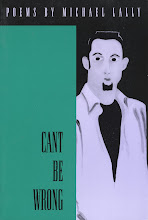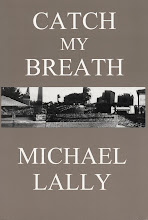
Speaking of poetry. I always loved Kyger’s poetry from the first time I read it. And now here’s the biggest collection of it yet, from the National Poetry Foundation. I’ve mentioned it before on this blog, but never devoted a post to it exclusively.
There’s a visceral and emotional presence in her work unlike that of any other. She’s one of three women on the “alternative” side of the poetry world who emerged in the 1950s with distinct voices that marked them as not only unique writers, but as unique people, and whose work I was immediately drawn to and still am.
I’m talking about:
Barbara Guest—a poet first associated with the original New York School Poets (otherwise all men, being Frank O’Hara, John Ashbery, Kenneth Koch, and James Schuyler).
Diane di Prima—one of the very few women among the “Beats,” and whose work was instantly recognized as new and important, at least by readers like me, at the time.
And Kyger—the only woman associated with a group of West Coast poets who had various group identities, but mainly with Gary Snyder—who I think she was married to for a time—and Philip Whelan (although Kyger’s poetry didn’t really get noticed until the 1960s).
Guest refined her abstract disjointed poetics into a fiercely unique voice that influenced, or at least impressed, many in the later “Language Poetry” movement.
Di Prima constantly reinvented her line and approach to the poem to suit the phases of her life and often her political development (the three main stages represented by her 1950s’ hipster streety prose poems collected in DINNERS & NIGHTMARES, her ‘60s reincarnation as in many ways the voice of the spirit of those times in REVOLUTIONARY LETTERS, and her ‘70s and beyond reincarnation as the voice of a kind of earthy alternative feminism exemplified in her LOBA series—all of which are worth reading not only for the writing but for the way they are like perfect time capsules, like Cassavettes film SHADOWS or the early more obscure films of Robert Downey Sr. or Shirley Clark’s films, they capture their times unfiltered by Hollywood or the academy or trendiness or any distractions from the realities of those moments as they were experienced by chroniclers who weren’t afraid to tell the truth as they experienced it).
Kyger remained the most constant to her original poetic discoveries and approaches, in which the private and the public, the spiritual and the emotional, the literary and the anti-literary, all meet as if meant for each other and destined to be family, like it or not.
I can’t think of another poet outside of Emily Dickinson who is as cryptic and yet totally revealing of her inner life as Kyger.
Nor can I think of any poet except Kyger whose work I could read every night before bed during the tough last weeks of the Democratic primary before it was decided, and then the campaigning and conventions and their aftermath, or whose work could have removed from my mind all the concerns and reactions and thoughts and schemes and unwritten editorials or letters to the editor or emails to the TV talking heads etc. during this exciting but tiring political season.
Her poems centered me in the spiritual, emotional, and experiential place she wrote each one from, almost all seemingly artless in the best ways, like a series of sometimes succinct, sometimes more discursive diary entries, the pages smudged and torn over time so often only fragments of the original message make it through to now.
Or like the fragments of Sappho’s poems as they’ve come down to us, or the Dead Sea Scrolls, or some other message from past times we have to decipher for ours.
Only her past times begin in the 1950s and come down to the present, and communicate more than spiritual concerns and notes on lovers and friendships and the dailiness of this particular poet’s life. Though they do all that, they also articulate a whole person. And what makes us, or at least me, want to keep reading about her, is how in her particulars I find my own resonance with the particulars of my so different life that in the end isn’t as different as I might have thought.
I’ll leave you with one example written in 1996 that isn’t typical, nor atypical, of her work, and which is left margin justified so that it also isn’t too difficult to reproduce:
Poison Oak for Allen
Here I am reading about your trip to India again,
With Gary Snyder and Peter Orlovsky. Period.
Who took cover picture of you three
With smart Himalayan mountain backdrop
The bear?
















No comments:
Post a Comment